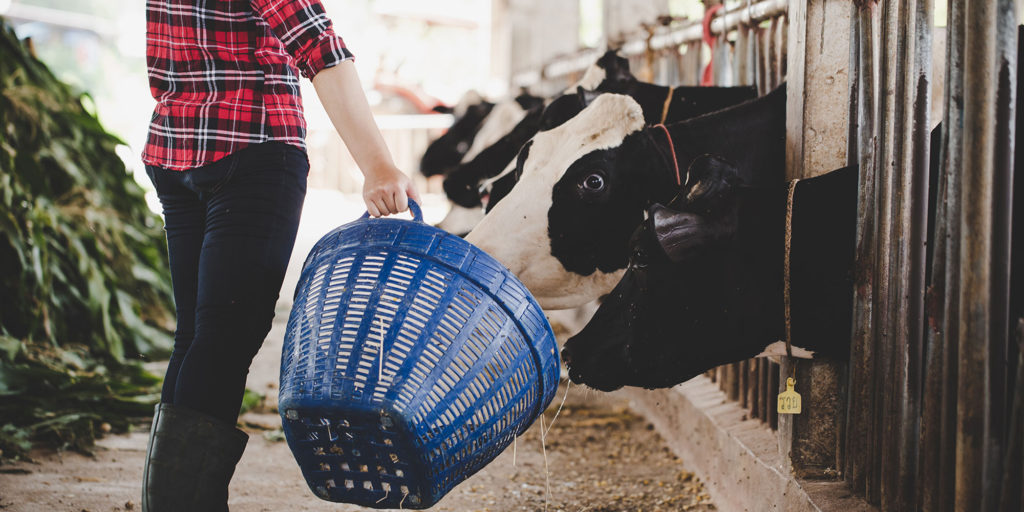Fishmeal is a commercial product obtained by drying the pelagic fish (fairly small silver colored fish not suitable for human consumption) and then grinding it.it is used to feed farm animals in the agricultural industry. It is an excellent source of fatty acids, digestible energy, minerals and vitamins. The increasing demand for fishmeal, coupled with a notable decrease in its production, created an intense competition for its use by the animal feed industry.
In view of its remarkable nutritional value, the cattle industry continued to increase the demand of fishmeal during the last 50 decades.
Industries where Fishmeal is used
Cattle industry is of two types:
- Beef cattle: the amount of beef cattle produced per year is approximately equivalent to 30,000 fully loaded jumbo jets.
- Dairy cattle: Dairy are bred for the abilities to produce large quantities of milk. The US has estimated 9 million cows in around 75,000 dairy herds with 120 cows per herd.
The United Kingdom has the second number (1.5 million cows) then New Zealand and Australia have third and fourth number respectively.
It is estimated that about 1000 million tons of animal feed is produced globally every year, including 600 million tons of compound feed. More than 80% of this feed is produced by 3800 feed mills and 60% of the world total is from 10 countries. Considerable changes are being made to utilize more diverse local sources of feed ingredients, particularly in protein material. In many developing countries, the cattle industry is more dependent upon fishmeal. It is reported that 7 million ton fishmeal is annually used in the cattle industry to meet the protein requirements of animals.
According to fishmeal manufacturers, the most basic reason for the use of fishmeal in the cattle industry is due to its remarkable amino acid profile, presence of polyunsaturated fatty acids, high digestibility and palatability characteristics that profits not only cattle industry but consumers also.
History
Fish has long been recognized as a health promoting ingredient. Research studies have revealed the presence of fats in fish, especially long chain omega-3 fatty acids that is a very important ingredient of animal diet in promoting optimal fast growth.
Rapid expansion and intensification of cattle (bovine animals) production, bring about a sharp increase in concentrates requirements. There has been an increase in the requirements for the supply of excellent protein sources, as per fishmeal exporters.
Protein feed source may be either animal or plant origin. The most important type of animal protein, cattle growers opted was fishmeal feed. Fishmeal prepared from small pelagic fish, non-gradable fish or from leftover waste from fish processing industries.
Benefits of using Fishmeal
- Use of fishmeal in the cattle industry shows improvement in reproductive performance, higher conception rate and better embryo implantation. Production losses in cattle sick of nematodes were substantially reduced in the presence of fishmeal and egg concentrations in faeces were low.
- Feeding the long chain n-3 fatty acids EPA and DHA lead to their depositions in intramuscular fat particularly as phospholipids. When these animals are consumed by humans, fatty acids are transferred into them. These fatty acids are valuable in human diet. Using bovine lung cells infected with parainfluenza-3 virus in vitro and enriching with EPA and DHA has proved to kill this preparatory pathogen than in non-enriched cells.
- Good quality fishmeal contains an excellent amount of digestible amino acids particularly methionine plus cysteine, lysine, threonine, tryptophan. Present in the natural peptide form they can be utilized with high efficiency. As a result, there is higher milk yields (from 1-2L per day), milk protein content (0.1-0.2% units).
- It is estimated by fishmeal exporters that fishmeal is amongst the “big three” most important sources of quality protein for feed manufacturers.
- When Holstein cows in early lactation are given a diet having three different sources that is 16%soybean meal, 16% fishmeal diet and 20% soybean fishmeal diet, there is an increased production in milk and SCM occur. Thus, fishmeal is considered to be a good quality undegradable protein source for cows producing more than 30kg/d milk.

